Animal Tracks Gallery
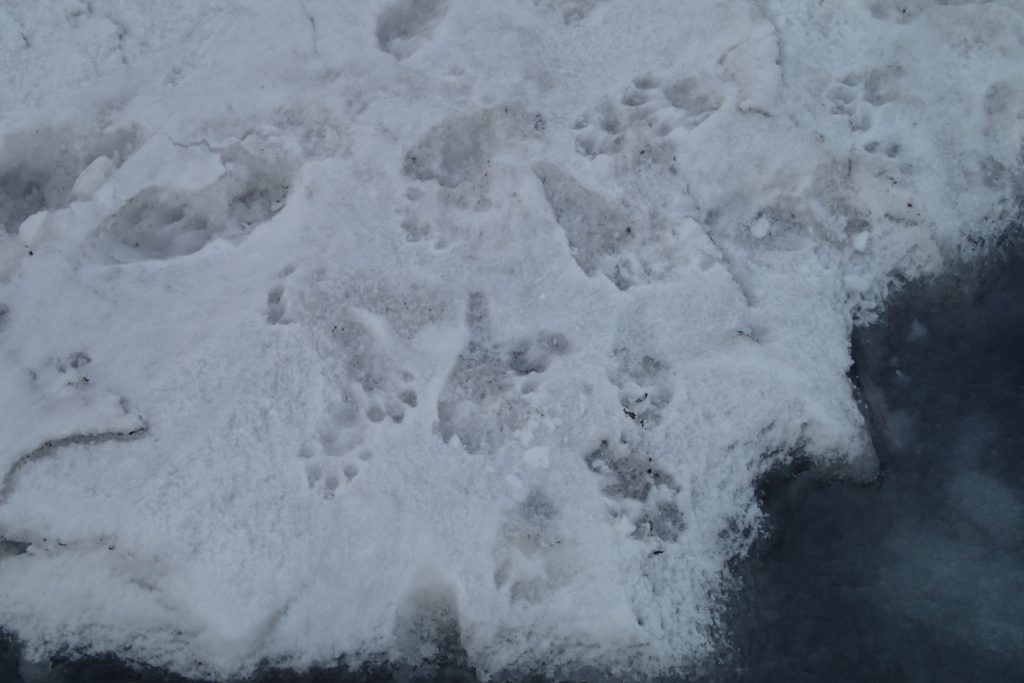
River otter tracks, near plunge hole, Minnehaha Creek, Minnetonka
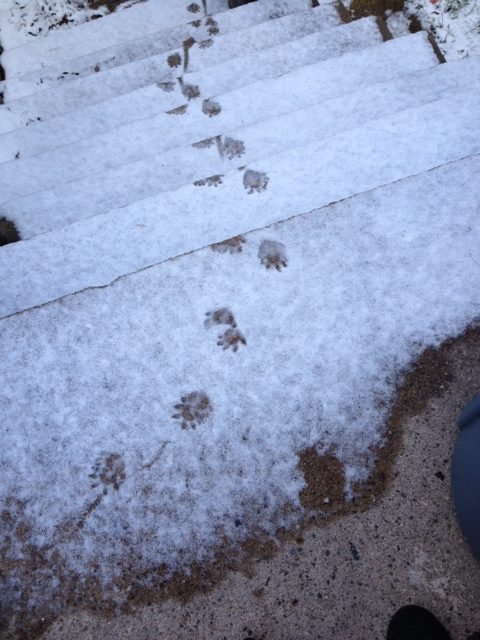
Opossum Tracks w/ tail drag
photograph by Faith Frankel, Boonton, NJ.
Faith said that she lives in town and the opossum lives somewhere in her yard.

River Otter sliding in the snow, Minnehaha Creek, Minnetonka, MN.
Animal Tracking Tutorial
What is the best way to find out what type of animals live in your neighborhood? How can you find out what type of animals crossed the trail or were around your home in the night? In winter, studying animal tracks will give you a lot of information about who is active in your area. The best snow depth to read animal tracks is 1-4 inches. When there is more snow, it is difficult to see the patterns that each animal leaves. Tracking is all about looking at patterns and knowing where an animal is most likely to be found.
Download the Animal Tracks Activity. Answer the questions using the text below. Click here for the PDF.
There are three basic groups of track patterns to learn.
Hoppers
Hoppers make a clump of four tracks in the snow, a space, then another clump of tracks. The large tracks are the hind feet (H) and the small tracks are the front feet (F)
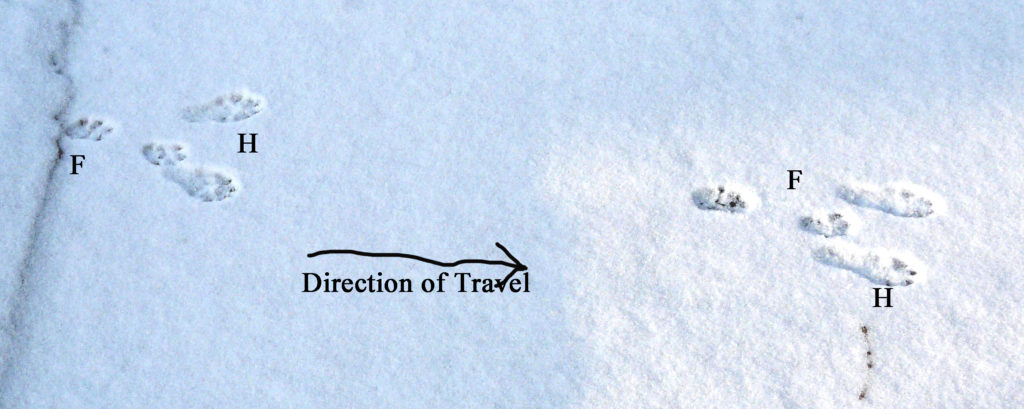
Rabbit Bounding Track
“F” is the smaller front feet. They hit the ground first.
“H” is the larger hind feet jump over the front feet.
Photo by Lawrence Wade
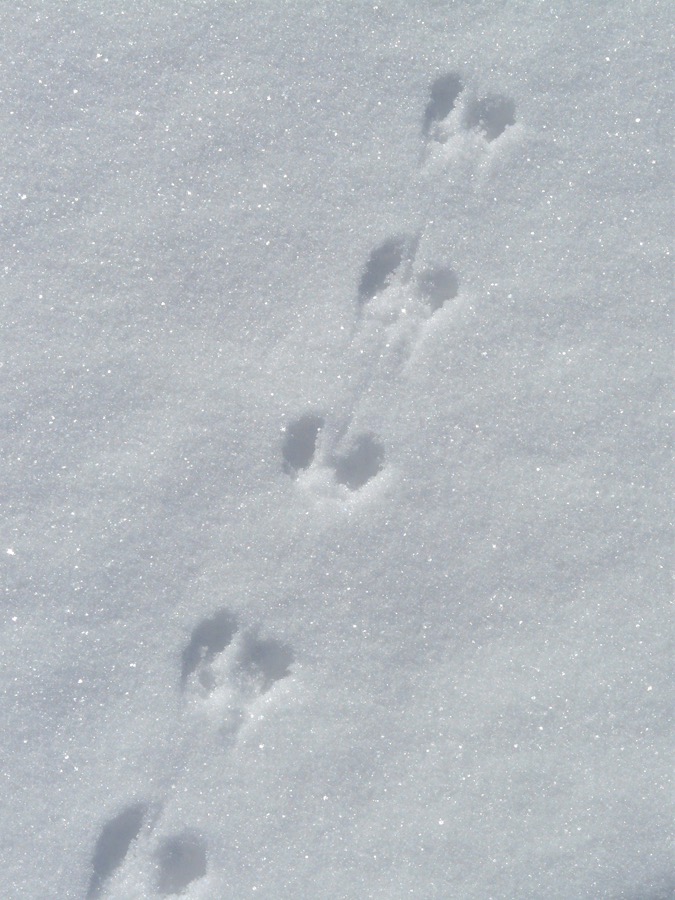
Mouse tracks – showing the tail drag in the snow
Walkers – “big foot” and “little foot”
In identifying the three species below, the important things to look for is the size of the track and the position of the front foot and the hind foot. Also, the beaver and muskrat are only found in wetland areas, whereas raccoons are found in many different habitats including wetlands.![]()

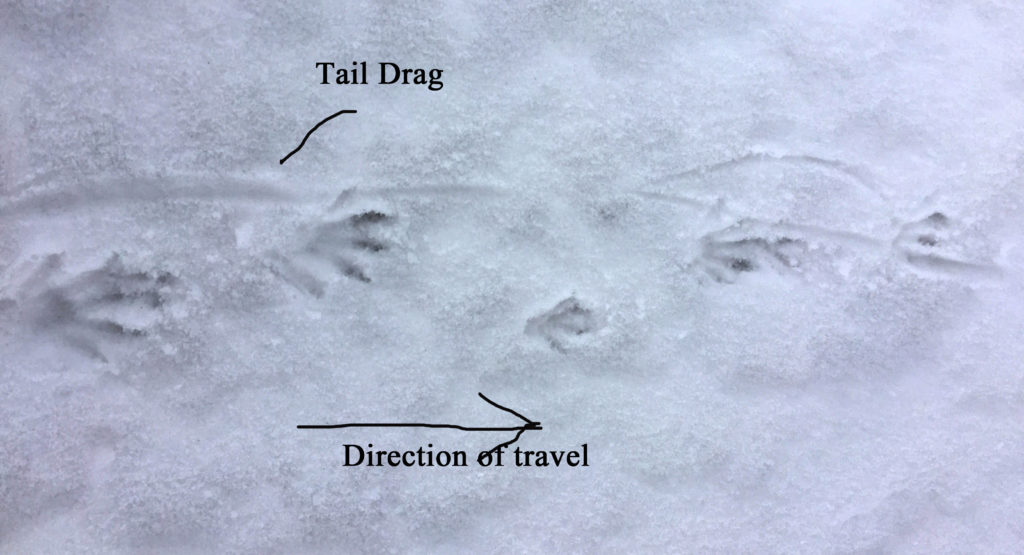
muskrat Tracks
Muskrats rarely leave their huts in the winter, unless they run out of food or the population is too high.

Raccoon tracks
The arrow shows the direction of travel
“H” shows the larger hind foot
“F” shows the smaller front foot
3. Straight-line walkers
Both deer and fox step with the hind foot falling exactly in the track of the front foot. Thus, the pattern in the snow appears that the animals are two-legged. This behavior is called “registering”and it helps the animal to conserve energy when walking in deep snow.
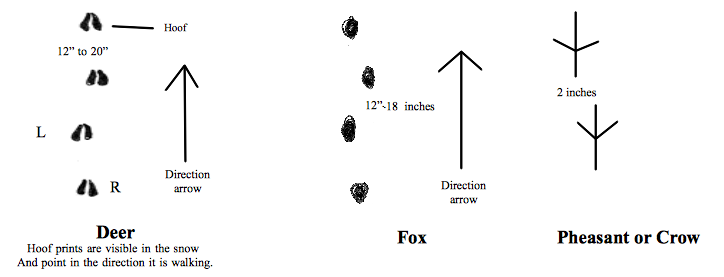
![]() After you determine whether it is a hopper, straight line walker, or a “big foot-little foot”. Look at the pattern closely and notice how many inches there are between tracks or clumps of tracks. Also, think about the habitat you are seeing the tracks. Some animals are restricted to certain habitats (ie beaver, mink, and muskrat are found in wetlands).
After you determine whether it is a hopper, straight line walker, or a “big foot-little foot”. Look at the pattern closely and notice how many inches there are between tracks or clumps of tracks. Also, think about the habitat you are seeing the tracks. Some animals are restricted to certain habitats (ie beaver, mink, and muskrat are found in wetlands).
Squirrel tracks often end at the base of a tree. Gray squirrels have 1-3 feet between clumps of tracks. Red squirrels have 1-2 feet between clumps. Note that the smaller front feet (F) on the squirrel are together while the rabbit has one of the front feet ahead of the other. The pattern of squirrels and rabbits is confusing, since the larger hind foot shows up in front. However both of these animals are hoppers, and the front feet go down and then larger hind feet hop over the front feet.
Foxes leave a neat pattern in the snow because the hind foot steps in the front foot track (registering). Registering helps a fox to conserve energy, when walking in deep snow. Its cousin, the dog, does not “register”, and leaves a much sloppier tracking pattern in the snow.

Deer also register, with the hind foot walking in the front foot track. Also, a deer hoof is easy to see when the snow is packed, and they usually drag their hooves. However, in deep snow, the hooves are more spread out and the dew claw is visible in the back of the track.
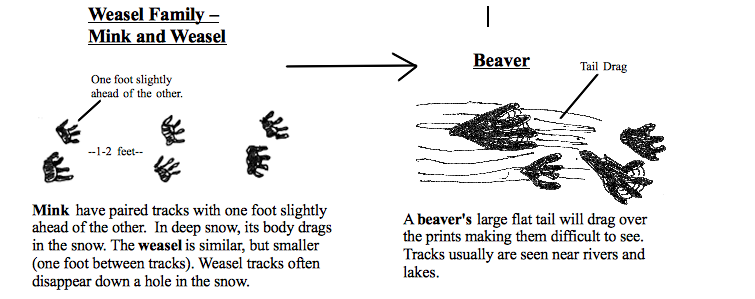
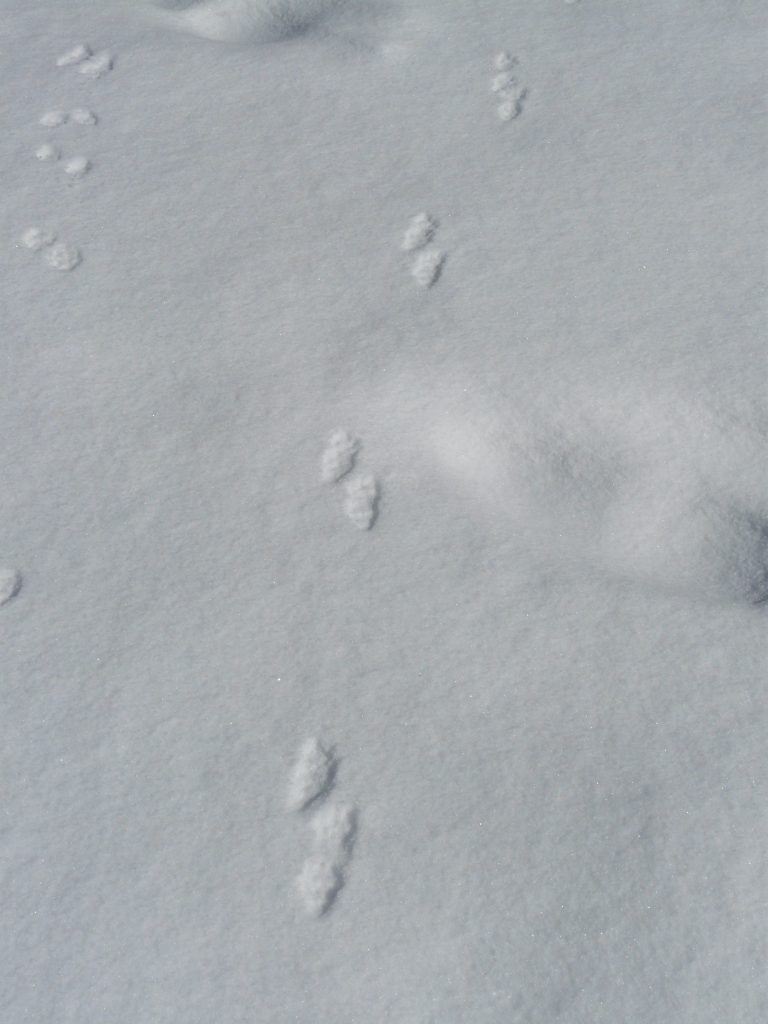
Mink tracks along Minnehaha Creek. One foot is slightly ahead of the other.
Animal Tracking Resources
Do you want to keep a record of the animal tracks you have seen in your neighborhood? Download a full-sized PDF and see what you can find on your own!
Click here: Animal Tracks Activity
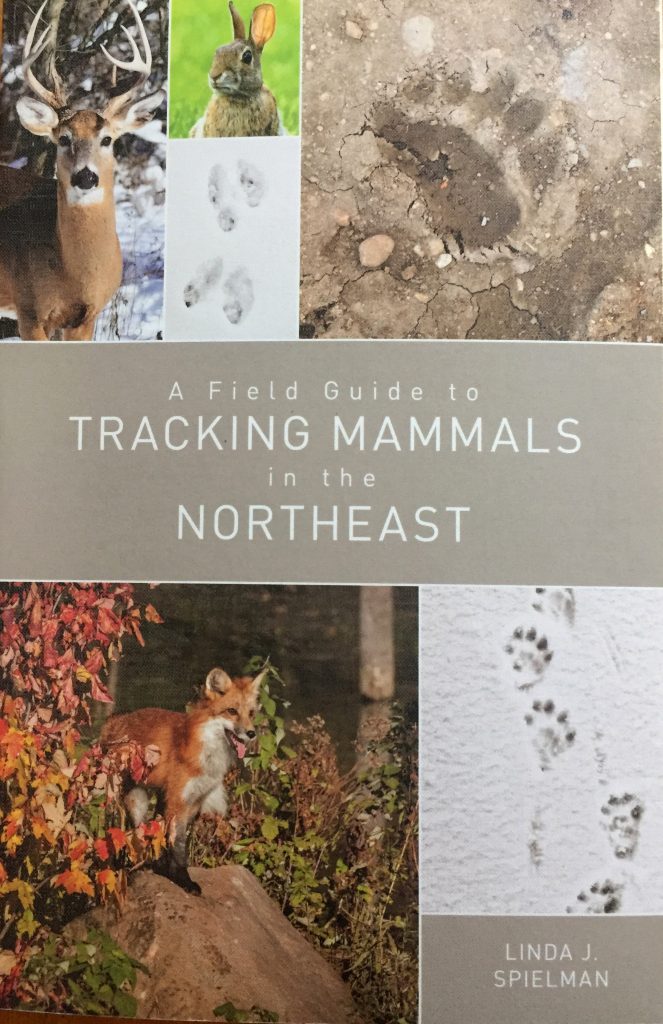 A Field Guide to Tracking Mammals in the Northeast
A Field Guide to Tracking Mammals in the Northeast
by Linda J. Spielman
Paperback, published by Countryman Press, released July 4, 2017 192 pages, 6 X 9 inches
ISBN-13: 978-1682680643
My book contains between 6 and 12 drawings for each of 40 species, each drawing meticulously and accurately copied from one or several photographs.
Each species treatment also includes written sections that discuss important details and point out differences and similarities between different species. Gait patterns can be as important as individual tracks for identification, so the typical gaits for each species are illustrated with diagrams and explained in written discussions. Measurements are given for tracks and gaits, and there is also a short section on habitat, sign, and scat. By focusing on the tracks themselves and limiting other topics I was able to produce a book that is easily carried in a daypack and yet remarkably comprehensive. My book arises out of my own experience tracking northeastern mammals, but the approach will be beneficial for trackers in any region. A Field Guide to Tracking Mammals in the Northeast is available from major booksellers. I can also ship it directly to you. You can send a check for $15.66 ($13.00 + $2.66 media mail) to Linda Spielman, PO Box 955, Dryden, NY 13053. I welcome your comments; visit www.lindajspielman.com, or contact me at lindajspielman@gmail.com.

If you live in Minnesota, you may want to join Minnesota Wildlife Tracking Project.
There are some very knowledgeable members and have helped me learn more about tracking.
To join, contact:
www.mntracking.org
Also, check out their Facebook page. It has excellent commentary on submitted track photos.
https://www.facebook.com/groups/346140378854811/


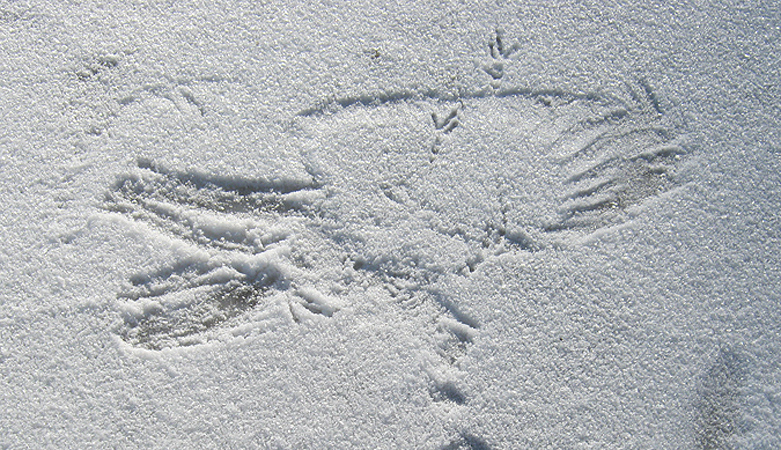
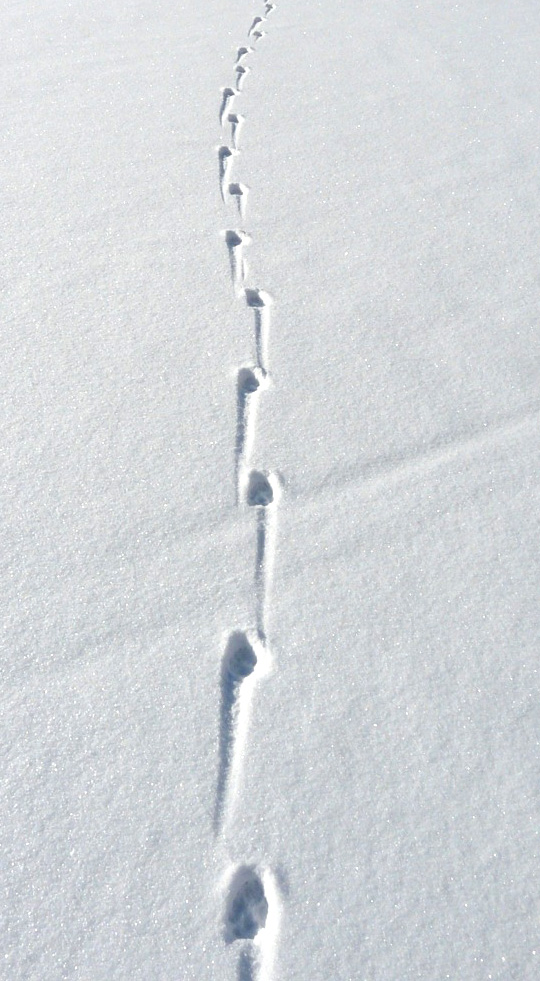
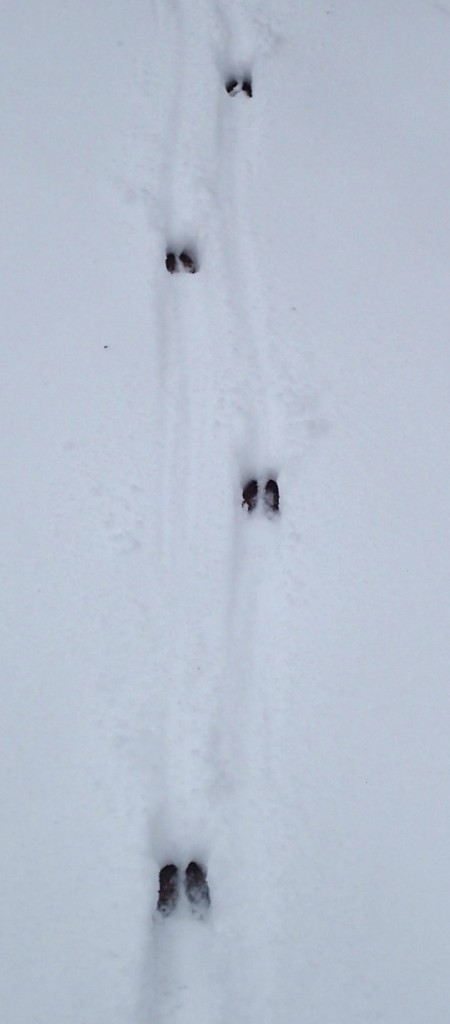
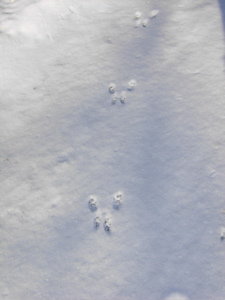
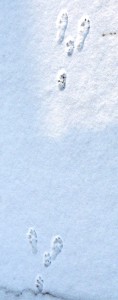


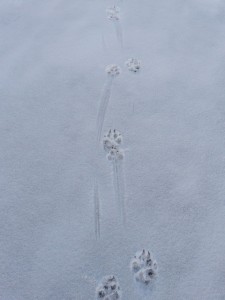



Thanks Larry! Surprisingly, it looks like two foxes walked up to and away from our front step last night!
I remember from school that a domestic cat leaves a single line of prints, but it’s not registering like a fox if I remember correctly. I think something to do with gait? What is that called?
Thank you, Larry, for making it easy for us to look for and appreciate animal tracks in our winter environment.
Thank you very much for your website. I was pretty sure the two different sets of tracks in the snow that I saw yesterday weren’t from our usual wildlife visitors–opossum, raccoons, coyotes, foxes, chipmunks, squirrels. I didn’t think they were from rabbits, either–I thought those would be much smaller–but now I think they are rabbit tracks. We have lots of rabbits in the area.
I was hoping they were deer tracks, as the ones out front looked cloven, but I don’t know of any deer spotting in my town, though in a town just as close to Boston, my parents saw a deer in their backyard several years ago.
I saw an illustration of giraffe tracks online and sent that to my kids telling them we had giraffes. They didn’t even respond to me. Tweens.
Thank you for your clear and logical explanation of tracks. I was able to identify a mystery snow visitor as a shrew not a mouse!
Great info, thanks so much. I am trying to identify tracks that I think are fisher am wondering if you have any tips or images that might help?
What a useful, wonderful website. The photographs are tremendous and the tracks very recognizable and understandable. A beautiful resource. Awesome!
Awesome website with wonderful, recognizable information. Very informative. Excellent and great photographs and very beautifully done. Wonderful. Thank you
I found some tracks all over my yard that resemble wagon wheel tracks, except much smaller. They are all in sand about an inch wide and about a half inch deep. My husband and I saw these tracks in the first part of March in the Central part of New Mexico. Every so often this animal has dug under a fence. I see no paw prints-just these curios tracks. What are they?
——
—–
——-
These markings are a little thicker single tracks with one in back and two in front, what is this in my yard, snow in he Eastern part of Allegheny County PA .
I have been trying to find out what animal left tracks in my backyard that begin with what looks like a slight depression in the snow, about 30 feet of tracks and then another slight depression in the snow. That’s it! No entry or exit. I thought it had to be a bird but there are no wing prints and the paw prints are about 2 inches in diameter. That would have to be a big bird, leaving a bigger “entry and exit” indentation. There was no burrowing into the snow at either end. The snow is about 2 feet deep.
Any ideas? I have a photo if it helps anyone.
Thanks very much.
ThAnKs SoOoOoOo MuCh FoR ThiS pAgE!!!!! With your “map” & the FIRST “GOOD” snow of the season, I’ve been able to identify FOX tracks ((the very same day I saw a live fox for the first time in my life….although that was down the road and NOT where I saw the tracks in my own yard)) AND raccoon tracks both in the same day ((we also had deer, rabbit & squirrel tracks, but I already knew what those were))!!!!! You’ve been a HUUUUUUUGE HELP!!!
The wing tracks are special winter markings. I was stumped whem in saw no feet marks. A low flyer as your pictures reference. Thanks
We have some large prints, straight line with “M” or “W” at one end with a large oblong area at one end. This is as large as a human footprint; however, strides are 3-4 feet apart. Would you have any idea what this is? We live by woods and there are many animals in the area. This is the first time I’ve seen this print.
Thank you. This is great information laid out with simple logic. Now I can tell which animals are generating so much excitement in my dog.
If you saw the digging in the past 3 months, it is not a groundhog. the digging could be squirrels. Can you send me a photo of the hole? larrywade16@gmail.com
I have seen prints like a rabbit, but haven’t seen any rabbits around. I saw dirt dug up near the foundation. Could it have been a ground hog?